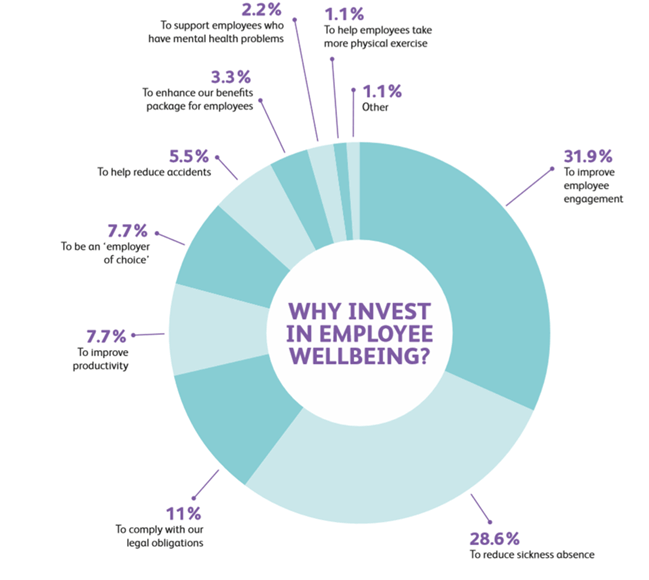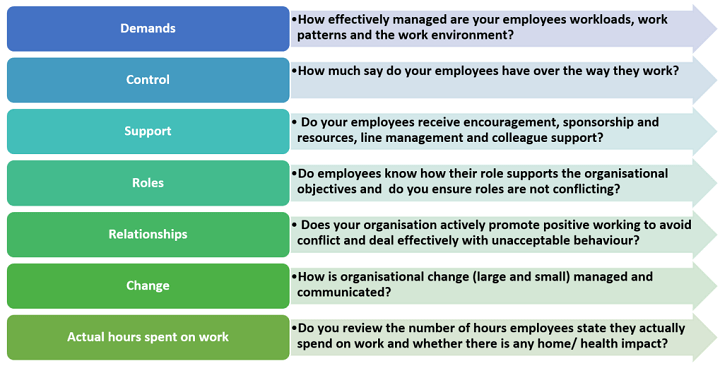25 April 2019
Quite simply, it’s the right way to look after your employees AND there is a ROI!
Nobody questions the case for rigorous health and safety in manufacturing – it is the right thing to do ethically, legally and for the bottom line. Less appreciated or understood, but nevertheless a key related concept, is the idea of employee ‘wellbeing’ at work.
Wellbeing makes business sense
For manufacturers, the business case for supporting the health and wellbeing of their workforce is becoming clearer as research suggests health and wellbeing is a key ingredient for enhanced bottom-line returns. Whilst some manufacturers remain focused on compliance, physical health, risk assessments and traditional health and safety practices, rather than addressing the mental health needs of their workforces, they could increase their productivity by as much as 10% if they invested greater resources in improving employee wellbeing.
Active intervention needs to take place
Employee wellbeing can be achieved in a number of ways, from providing facilities which actively encourage employees to eat healthily, exercise regularly, and access occupational health checks, through to more business and role-related issues.
Why some companies are already investing in employee wellbeing
Need further persuasion?
By increasing your awareness of employee wellbeing and ‘actively being in touch’ with your organisation and workforce, you strengthen your capacity for achieving the best possible results which are supported with and visible by:
- Delivering value by converting Health & wellbeing strategies and initiatives into tangible business values
- Reducing staff turnover and sickness absence
- Improving management of absence cases
- Having a healthier workplace; better staff morale; better customer service; more committed and engaged staff
- Enhancing skills retention and recruitment by being an ‘employer of choice’
Key questions to consider
Consider these key questions within your organisation which, if not properly managed, are associated with poor health and wellbeing, lower productivity and increased sickness absence. How well would you rate each in your organisational context?
Statistics which focus our minds
“At any one time, one worker in six in the UK is experiencing a mental health problem. Depression, stress and anxiety are the most common, and they affect every workplace in the country, big or small. For too many people, unnoticed and untreated mental distress leads to protracted periods of absence and loss of job and income.” (Professor Bob Grove, Centre for Mental Health joint Chief Executive)
According to ACAS (Advisory, Conciliation and Arbitration Service):
- Mental ill-health, including stress, depression and anxiety, is thought to be responsible for 91 million lost working days each year, more than for any other illness.
- Analysts believe that this sickness absence costs £8.4 billion each year, plus another £15.1 billion in reduced productivity. A further £2.4 billion is lost replacing staff who leave work because of mental ill-health.
- Recent estimates put the cost to UK employers at £30 billion each year.
According to the annual CIPD Absence Management survey:
- Over two-fifths (41%) of organisations have seen an increase in reported mental health problems (such as anxiety and depression) over the last twelve months.
How can we help?
Explore our Hr & Legal advice and guidance plans
From employment law compliance, to tribunal support and strategy planning, with support from our team of highly qualified Solicitors, Barristers and HR professionals - choose a support package that enables you and your business to thrive. Find out more>
Wellbeing services
From helping you prioritise your Wellbeing initiatives to providing mental and physical health solutions, our suite of Wellbeing tools, training and consultancy has been designed to support employers to create a working environment that engages and energises the workforce. Find out more >


